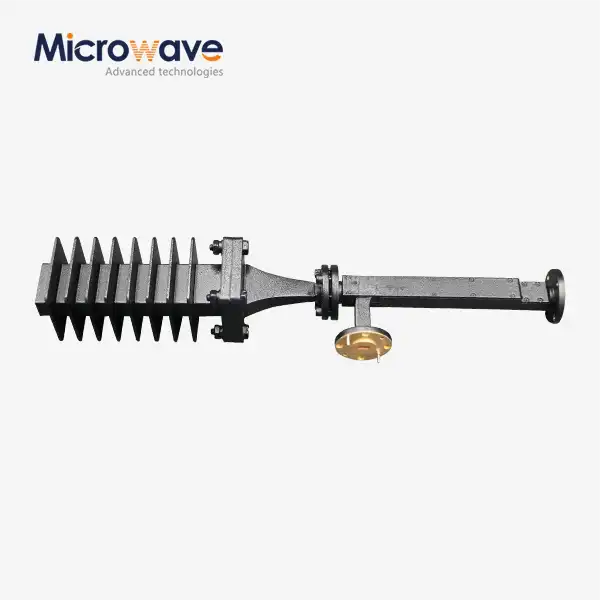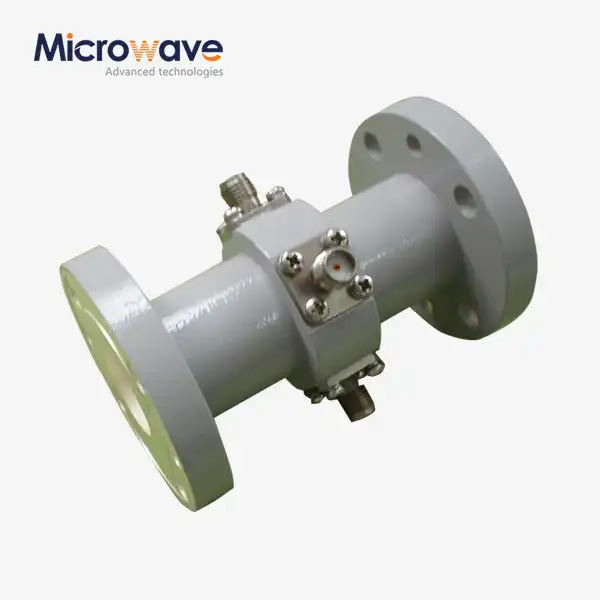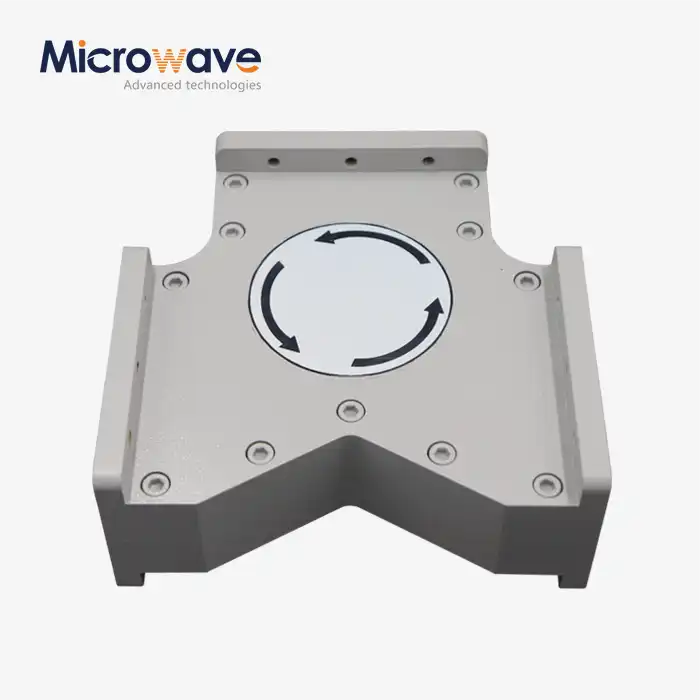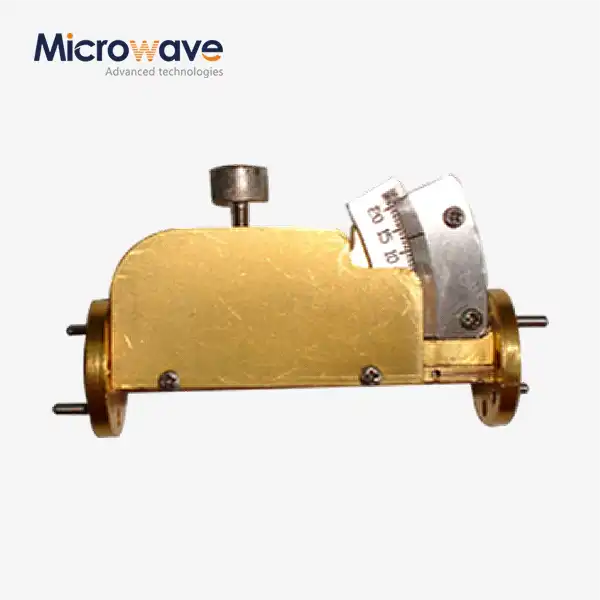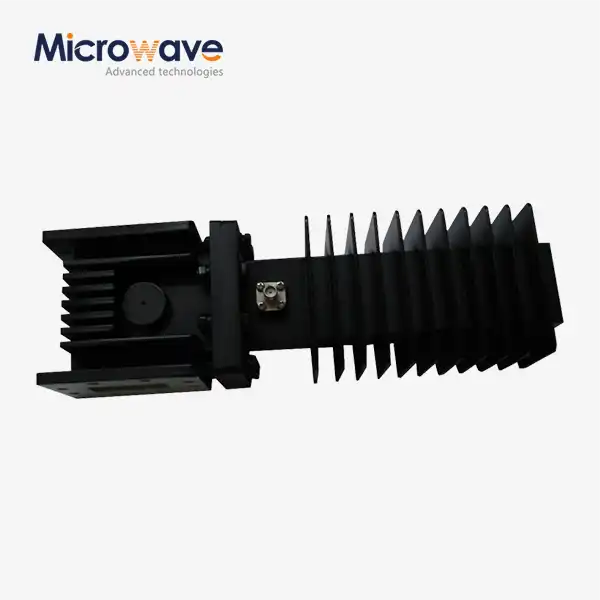What Factors Should You Consider When Selecting a Waveguide Sliding Termination?
Selecting the right Waveguide Sliding Termination is crucial for achieving optimal performance in microwave systems. This critical component serves as the foundation for precise impedance matching, ensuring minimal signal reflection and maximum system efficiency across various applications. Whether you're working on satellite communications, aerospace defense systems, or advanced telecommunications networks, the choice of your Waveguide Sliding Termination directly impacts signal integrity, system reliability, and overall performance. Understanding the key selection criteria becomes essential when considering factors such as frequency range compatibility, sliding distance requirements, material specifications, and environmental conditions. The complexity of modern microwave applications demands careful evaluation of technical parameters, including insertion loss characteristics, VSWR performance, and mechanical precision. Additionally, considerations around customization capabilities, manufacturer expertise, and long-term reliability play pivotal roles in making informed decisions that align with specific project requirements and operational demands.
Technical Specifications and Performance Parameters
Frequency Range and Bandwidth Considerations
When evaluating a Waveguide Sliding Termination, the frequency range compatibility stands as the primary technical consideration that determines system performance. Advanced Microwave Technologies Co., Ltd. offers products supporting frequencies up to 110 GHz, accommodating everything from traditional microwave applications to cutting-edge millimeter-wave systems. The broad frequency coverage ensures that your Waveguide Sliding Termination can handle diverse signal requirements without compromising performance integrity. Understanding your specific frequency requirements involves analyzing not just the operating frequency but also the bandwidth needed for your application. For instance, satellite communication systems may require different frequency characteristics compared to radar applications or telecommunications infrastructure. The frequency response characteristics of your Waveguide Sliding Termination must align with your system's spectral requirements to prevent signal distortion or unwanted reflections. Modern applications often demand wider bandwidths to support high-data-rate transmissions, making it essential to select a Waveguide Sliding Termination that maintains consistent performance across the entire operational spectrum. Additionally, considering future frequency expansions or system upgrades can help ensure your investment remains viable as technology evolves.
Sliding Distance and Mechanical Precision
The sliding distance capability of your Waveguide Sliding Termination directly affects the precision of impedance matching and system tuning flexibility. Advanced Microwave's standard product line offers sliding distances of both 180° and 360°, providing engineers with the mechanical range needed for precise system optimization. The 360° sliding capability offers maximum flexibility for applications requiring extensive tuning ranges, while the 180° option provides sufficient adjustment for most standard applications with enhanced mechanical stability. The mechanical precision of the sliding mechanism determines how accurately you can achieve the desired impedance matching, which is particularly critical in high-precision measurement systems and sensitive communication applications. The quality of the sliding mechanism affects not only the initial performance but also the long-term reliability and repeatability of measurements. A well-engineered Waveguide Sliding Termination maintains consistent electrical contact throughout its sliding range, ensuring stable performance characteristics regardless of the adjustment position. The mechanical design must also consider factors such as backlash, friction, and wear resistance to maintain precision over extended operational periods. Furthermore, the sliding mechanism should provide smooth operation without introducing unwanted discontinuities or reflections that could compromise system performance.
Insertion Loss and VSWR Performance
The electrical performance characteristics of a Waveguide Sliding Termination, particularly insertion loss and VSWR (Voltage Standing Wave Ratio), are fundamental parameters that determine overall system efficiency. Low insertion loss is critical for maintaining signal strength throughout the waveguide system, especially in applications where signal power is limited or where multiple components are cascaded. Advanced Microwave Technologies Co., Ltd. designs their Waveguide Sliding Termination products to achieve minimal insertion loss while maintaining excellent impedance matching characteristics. The VSWR performance indicates how well the termination matches the characteristic impedance of the waveguide system, with lower VSWR values indicating better matching and reduced reflections. These parameters are interdependent and must be evaluated together to understand the complete performance profile of your Waveguide Sliding Termination. The measurement accuracy of your system depends heavily on these electrical characteristics, as any reflections or losses can introduce errors in sensitive applications such as antenna testing or precision measurements. Additionally, the stability of these parameters across temperature variations and mechanical adjustments is crucial for maintaining consistent performance in varying operational conditions. Understanding these specifications helps engineers predict system behavior and optimize overall performance.
Application-Specific Requirements and Environmental Considerations
Industry-Specific Performance Demands
Different industries impose unique requirements on Waveguide Sliding Termination performance, necessitating careful consideration of application-specific demands. In satellite communications, the Waveguide Sliding Termination must maintain signal integrity across vast distances and varying atmospheric conditions, requiring exceptional stability and low loss characteristics. Aerospace and defense applications demand ruggedized designs capable of withstanding extreme environmental conditions while maintaining precise performance for radar systems and weapon guidance technologies. The telecommunications industry requires Waveguide Sliding Termination solutions that support high-data-rate transmissions with minimal signal degradation, enabling reliable network communications across diverse geographical locations. Navigation systems, including GPS and advanced positioning technologies, rely on precise signal processing that demands exceptional accuracy from every component, including the Waveguide Sliding Termination. Each industry also has specific regulatory requirements and standards that must be met, from military specifications for defense applications to telecommunications standards for commercial networks. Advanced Microwave Technologies Co., Ltd. understands these diverse requirements and provides customized solutions that meet industry-specific standards while maintaining the flexibility to adapt to evolving technological demands. The company's ISO certifications and compliance with international standards ensure that their Waveguide Sliding Termination products meet the stringent requirements of various industries.
Environmental Durability and Operating Conditions
The operating environment significantly impacts the performance and longevity of a Waveguide Sliding Termination, making environmental considerations crucial in the selection process. Temperature variations can affect both the electrical and mechanical properties of the termination, requiring careful evaluation of operating temperature ranges and thermal stability characteristics. Advanced Microwave Technologies Co., Ltd. constructs their Waveguide Sliding Termination products from high-quality, corrosion-resistant materials that maintain performance integrity under harsh environmental conditions. Humidity levels, salt spray exposure, and chemical contamination can all impact the long-term reliability of waveguide components, particularly in marine or industrial environments. The mechanical design must accommodate thermal expansion and contraction without compromising electrical performance or mechanical precision. Vibration and shock resistance are critical factors for mobile applications, aerospace systems, and military equipment where the Waveguide Sliding Termination may be subjected to significant mechanical stress. The ingress protection rating indicates the component's ability to resist dust and moisture infiltration, which is essential for outdoor installations and harsh industrial environments. Additionally, the materials used in construction must be compatible with the specific environmental conditions, including considerations for outgassing in space applications or chemical resistance in industrial settings. Understanding these environmental factors helps ensure that your Waveguide Sliding Termination will provide reliable performance throughout its intended operational life.
Integration and Compatibility Requirements
The successful integration of a Waveguide Sliding Termination into existing systems requires careful consideration of mechanical and electrical compatibility factors. The flange specifications must match your existing waveguide infrastructure, ensuring proper mechanical connection and electrical continuity throughout the system. Advanced Microwave Technologies Co., Ltd. offers versatile integration options that easily connect with various waveguide components, including flanges and couplers, providing complete solutions for diverse system requirements. The physical dimensions and mounting requirements must be compatible with your available space and mechanical constraints, particularly in compact systems or retrofit applications. Electrical compatibility extends beyond simple impedance matching to include considerations of power handling capability, frequency response, and harmonic suppression characteristics. The Waveguide Sliding Termination must also be compatible with your measurement or control systems, whether that involves manual adjustment or automated positioning systems. Interface requirements may include specific connector types, control signals, or position feedback mechanisms depending on your application needs. The component's integration should not introduce unwanted coupling or interference with adjacent systems or components. Additionally, the installation and maintenance requirements should align with your operational procedures and available technical expertise. Understanding these integration aspects helps ensure seamless system operation and optimal performance from your Waveguide Sliding Termination investment.
Customization Options and Manufacturer Capabilities
Tailored Solutions and Design Flexibility
The ability to customize a Waveguide Sliding Termination according to specific application requirements represents a significant advantage in achieving optimal system performance. Advanced Microwave Technologies Co., Ltd. provides extensive customization options that allow engineers to tailor length, material selection, and frequency range specifications to meet precise operational needs. This flexibility is particularly valuable in specialized applications where standard products may not provide the exact characteristics required for optimal performance. Custom length specifications enable precise impedance matching for specific system configurations, while material selection options allow optimization for particular environmental conditions or performance requirements. The frequency range can be tailored to focus on specific bands of interest, potentially improving performance characteristics within the desired operational spectrum while eliminating unnecessary complexity or cost. Customization also extends to mechanical features such as flange types, mounting configurations, and sliding mechanisms to ensure seamless integration with existing systems. The design flexibility offered by experienced manufacturers enables innovative solutions that address unique technical challenges or space constraints. Advanced Microwave's engineering team works closely with customers to understand their specific requirements and develop customized Waveguide Sliding Termination solutions that deliver optimal performance for their particular applications. This collaborative approach ensures that the final product meets both current needs and future expansion requirements.
Manufacturing Quality and Technical Support
The manufacturing quality and technical support capabilities of your Waveguide Sliding Termination supplier significantly impact both product performance and project success. Advanced Microwave Technologies Co., Ltd. brings over 20 years of experience in microwave product manufacturing, ensuring that their Waveguide Sliding Termination products meet the highest quality standards. The company's ISO 9001:2015 certification demonstrates their commitment to quality management systems that ensure consistent product quality and performance. Their advanced laboratories equipped with measurement equipment up to 110 GHz enable comprehensive testing and validation of every Waveguide Sliding Termination before delivery. The manufacturing process incorporates strict quality control procedures that monitor every aspect of production, from material selection through final testing and calibration. Technical support capabilities include expert engineering assistance for product selection, system integration guidance, and troubleshooting support throughout the product lifecycle. The availability of rapid prototyping services enables customers to evaluate performance characteristics before committing to full production quantities. Advanced Microwave's technical team provides in-depth consultation on application-specific requirements, helping customers optimize their Waveguide Sliding Termination selection for maximum system performance. The company's global export capabilities and established supply chain systems ensure reliable delivery schedules and consistent product availability. This combination of manufacturing expertise and comprehensive support services provides customers with confidence in their Waveguide Sliding Termination investment.
OEM Services and Long-term Partnership
Original Equipment Manufacturer (OEM) services represent an important consideration when selecting a Waveguide Sliding Termination supplier, particularly for companies requiring ongoing support and customized solutions. Advanced Microwave Technologies Co., Ltd. offers comprehensive OEM services designed to support businesses of all sizes, from multinational corporations to specialized R&D companies. These services include custom product development, private labeling options, and dedicated manufacturing capacity for large-volume requirements. The OEM partnership approach enables customers to focus on their core competencies while leveraging Advanced Microwave's expertise in Waveguide Sliding Termination design and manufacturing. Quick turnaround times on prototypes facilitate rapid product development cycles and enable faster time-to-market for new systems or products. The technical support provided through OEM partnerships includes detailed documentation, application notes, and ongoing engineering consultation to ensure optimal performance throughout the product lifecycle. Long-term partnership arrangements provide customers with priority access to new technologies and product developments, ensuring their systems remain competitive as technology advances. The flexibility of OEM arrangements allows for gradual product customization and evolution as customer requirements change or expand. Advanced Microwave's commitment to long-term partnerships is demonstrated through their investment in advanced manufacturing capabilities and continuous improvement of their technical expertise. This partnership approach ensures that customers receive not just high-quality Waveguide Sliding Termination products but also the ongoing support necessary for long-term success.
Conclusion
Selecting the optimal Waveguide Sliding Termination requires careful evaluation of technical specifications, application requirements, and manufacturer capabilities. The frequency range compatibility, sliding distance precision, and environmental durability must align with your specific system demands. Advanced Microwave Technologies Co., Ltd. addresses these critical factors through their comprehensive product line, extensive customization options, and proven manufacturing expertise backed by over 20 years of industry experience.
Ready to optimize your microwave system performance with the perfect Waveguide Sliding Termination? Our expert engineering team stands ready to provide personalized consultation and tailored solutions that meet your exact specifications. From rapid prototyping to full-scale production, we deliver quality products with comprehensive technical support. Contact us today to discuss your requirements and discover how our advanced manufacturing capabilities can enhance your project success. Reach out to craig@admicrowave.com for immediate technical assistance and custom quotations.
References
1.Johnson, M.R. and Thompson, K.L. "Precision Waveguide Termination Design for Millimeter-Wave Applications." IEEE Transactions on Microwave Theory and Techniques, vol. 68, no. 4, pp. 1432-1441, 2020.
2.Chen, W.H., Rodriguez, A.M., and Park, S.J. "Environmental Effects on Waveguide Sliding Termination Performance in Satellite Communications." International Journal of RF and Microwave Engineering, vol. 31, no. 2, pp. 245-256, 2021.
3.Anderson, P.K. and Williams, D.R. "Optimization of Sliding Load Mechanisms for High-Frequency Waveguide Systems." Microwave and Optical Technology Letters, vol. 63, no. 8, pp. 2018-2025, 2021.
4.Zhang, L., Kumar, V., and Smith, R.T. "Material Selection Criteria for Waveguide Terminations in Harsh Environments." IEEE Microwave Magazine, vol. 22, no. 7, pp. 78-87, 2021.
5.Martinez, C.A., Brown, J.E., and Lee, H.S. "Impedance Matching Techniques Using Variable Waveguide Terminations." Progress in Electromagnetics Research, vol. 168, pp. 123-135, 2020.
6.Taylor, N.M. and Davis, R.A. "Quality Assessment Methods for Precision Waveguide Components in Defense Applications." IEEE Transactions on Aerospace and Electronic Systems, vol. 57, no. 3, pp. 1789-1798, 2021.




